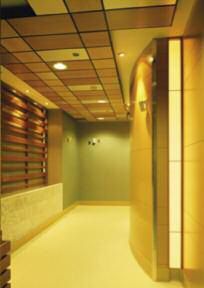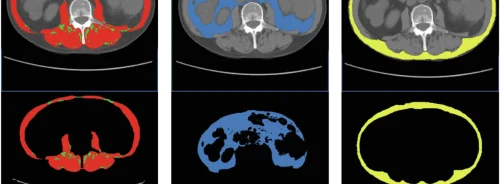HealthManagement, Volume 12 - Issue 4, 2012
Adapting the Environment to Meet Patient and Healthcare Staff Needs
Architecture and design have been influenced by industrial societies for decades. As a result, public buildings such as hospitals have often been designed to function and look like factories. Clinical practice in hospitals focuses mainly on treating illness while often neglecting a patient’s psychological, social and spiritual needs. Environmental qualities that could be considered as psychosocially supportive have not been developed fully.
Salutogenic Design
Psychosocially supportive design stimulates and engages people, both mentally and socially, and supports an individual’s sense of control. The basic function of psychosocially supportive design is to start a mental process by attracting human attention, which may reduce anxiety and promote positive psychological emotions. Health processes could be strengthened and promoted by implementing design that is salutogenic, i.e., that focuses on the factors that keep us well, rather than those that make us unwell.
The aim of salutogenic design is to create environments that stimulate the mind in order to create pleasure, creativity, satisfaction and enjoyment. There is an important relationship between an individual’s health and the characteristics of the physical environment.
The holistic viewpoint emphasises multiple dimensions of health, including the physical, psychological, emotional, spiritual and social (Nordenfelt 1991). From a research perspective, health can be divided into pathogenic and salutogenic starting points.
Pathogenic research focuses on explaining why certain aetiological factors cause disease and how they are developed in the physiological organism (Antonovsky 1979). The primary aim of pathogenic research is often to find medical treatments (Antonovsky op. cit.).
Salutogenic research is based on identifying wellness factors that maintain and promote health. (Antonovsky 1991). Together, the salutogenic and the pathogenic approach offer a deeper knowledge and understanding of health and disease (Antonovsky 1991). To answer the salutogenic question – what is causing and maintaining healthy people? – Antonovsky (1991) developed the concept of a sense of coherence (SOC). A person with a high sense of coherence chooses the most appropriate coping strategy in a stressful situation. For example, the person may decide to fight, flee or be quiet depending on what kind of stressor the individual is exposed to. Research has shown that it is possible to measure a person’s sense of coherence and thereby predict an individual’s health (Suominen et al. 2001).
The concept of sense of coherence has three vital components: comprehensibility, manageability and meaningfulness (Antonovsky 1991). A person with a strong sense of coherence scores high on all three components.
According to Antonovsky (1991), the term comprehensibility implies that the individual perceives the surrounding environment and what is happening in the world as coherent. If something unexpected is happening, such as an accident or personal failure, the person who understands why they are happening has a higher sense of coherence than one who cannot. A person with a low sense of coherence perceives himself as unlucky.
Manageability means that people have all the required resources necessary to cope with a given challenge or demand, feel that they are influencing what is happening around them and do not perceive themselves as victims of circumstance.
Meaningfulness is the component that motivates a person’s sense of coherence. Antonovsky (1991) believes that a person’s sense of meaningfulness is connected to his or her perception that there are important and meaningful phenomena in life.
The Built Environment, Health and Wellbeing
There is an interaction between human health and the built environment. The physical environment is not only vital for good health, but can be a critical stressor for the individual (Dilani 2006). Physical elements in an organisation can contribute to stress, and are therefore essential factors for increasing comfort (Dilani 2001).Most people in the western world spend the majority of their time in indoor environments. There is a lack of knowledge about how these environments affect health and wellbeing. There is a general belief that humans are always adapting to the environment (Dilani 2001). This theory of adaptation indicates that people become less conscious of the environment the longer they reside or work in that given environment (Carnvale 1992). A general belief is that if one lets oneself be affected by the physical surroundings then it is a sign of weakness.
In order to create supportive physical environments it is crucial to understand an individual’s fundamental needs (Heerwagen et al. 1995). It is also necessary for different professional disciplines to willingly cooperate in creating the best conditions for humans (Heerwagen et al. 1995; Lawrence 2002).
Before a zoo is built, it is common practice for architects, designers, biologists, landscape architects, animal psychologists and building specialists to collaborate in creating an environment that optimises living conditions for the animals (Heerwagen et al. 1995). Factors such as materials, vegetation and lighting are taken into consideration.Animals need enough space to eat, sleep and decide when to be social or seek solitude, and even their need for control and choice has been noticed. The aim is to create an environment that will support the animal’s physical, psychological and social wellbeing. Ironically, humans do not seem to make the same demands when a workplace is going to be designed.
Heerwagen et al. (1995), created a framework and guidelines for salutogenic design, which highlighted the following factors:
- Social cohesion with formal and informal meeting points;
- Personal control for regulating lighting, daylight, sound, temperature, and access to private rooms;
- Restoration and relaxation with quiet rooms, soft lighting, access to nature and a good view.
In the nineteenth century Florence Nightingale developed a theory of healthcare, which emphasised that physical elements such as noise, lighting and daylight are vital for an individual’s health and mood (SHSTF 1989). In 1972 Levi founded the stress theory, which was later developed by Kagan and Levi (1975). The model describes how the physical environment is the foundation on which society’s organisation, structure and function is built and, in the long run, is critical to the promotion of health or disease (Dilani 2001). The model is based on a system that points to a deeper understanding between the physical environment and different human components (Kalimo 2005). The model is used in the field of architecture to integrate design elements with health and wellbeing.

Nature and its Meaning for Health
Most people have a relationship to nature and many people greatly value diverse natural environments. What is it that makes people feel at ease in nature? Does the natural environment affect people in different ways? Is it possible to draw any general conclusions about nature’s influence on the human being?
The restorative environment should be inviting and well balanced with an aesthetic beauty that allows people to reflect (Herzog et al. 2003). Nature offers various colours, forms and scents, which can encourage humans to forget about their everyday life (Kaplan & Kaplan 1989; Kaplan 1995; Herzog et al. 2003). Natural environments often offer an atmosphere where the individual’s needs for harmony and compatibility are met. It is therefore very important that natural environments are accessible at the workplace.
The attention restoration theory (ART) has been tested and confirmed by different researchers (Herzog et al. 2003; Tennessen and Cimprich 1995). Herzog et al. showed that three of the four components: being away; extent; and compatibility, are seen as measurable indicators of how to create a restorative environment. Several studies have also confirmed that human beings perceive natural environments as more restorative than urban environments (Van den Berg et al. 2007). Therefore, when human beings are tired and mentally exhausted, nature is the appropriate place for restoration. Other studies have shown that viewing nature through a window has positive health outcomes (Moore 1981-1982; Ulrich 1984; Leather et al. 1998; Frumkin 2001).
The Influence of Light on Health
There is much research on daylight’s positive effects on humans’ psychological wellbeing (Evans 2003). A lack of daylight can lead to both physiological and psychological difficulties (Janssen & Laike 2006). A study at a correctional institution in Michigan showed that inmates who had their windows facing the prison yard visited the healthcare facility more often than inmates who had windows facing the forest and farming fields (Moore 1981-1982). Research has also shown that daylight in a classroom is necessary for the pupils to maintain a balanced hormone level (Küller and Lindsten 1992).
Windows can also have positive health outcomes on patients (Verderber 1986; Lawson 2001). For example, the window can contribute to improved health by allowing fresh air and daylight to enter, by providing a view and a link to the outer world, thus satisfying a patient’s or prisoner’s need for viewing the seasonal variations (Verderber 1986; Lawson 2001). Ulrich and Lundén (1984) showed that hospital patients staying in rooms with windows viewing nature were rehabilitated faster than patients who viewed a brick wall. Another study showed that exposure to direct sunlight via windows in a workplace increased the workers’ wellbeing and had a positive impact on their attitudes and job satisfaction (Leather et al. 1998).
Rooms without a window can affect human health and wellbeing negatively (Janssen and Laike 2006; Küller and Lindsten 1992; Verderber 1986). One study showed that blue collar workers who worked in rooms without windows experienced more tension and were more negative towards their physical working conditions than workers who had offices with windows (Heerwagen and Orians 1986). Patients in rooms without windows can develop sensory deprivation and depressive reactions and exacerbate perception, cognition and attention (Verderber 1986).
Since daylight positively impacts human physiology, it should be considered rather than artificial daylight which claims to have the same affect. Some research has found that artificial daylight can positively affect peoples’ cortisol levels and perhaps contribute to fewer sick days (Küller and Lindsten 1992). Lack and Wright (1993) showed that exposure to lighting at certain times during a 24-hour period can prolong sleep and improve the quality of sleep. Energy consumption and costs can decrease if the individual has the ability to control the lighting levels, which also has positive effects on environmental resources and an individual’s general satisfaction (Moore et al. 2004). Küller (2002) suggests that lighting will become more important in the future, especially since it is becoming more common to construct buildings without windows or access to daylight.
Art, Healing and Wellbeing
According to art historians, humans live today in a more aesthetic world, where art, fashion and design offer countless aesthetic experiences (Lederet al. 2004). When a person observes and appreciates different visual scenes, such as a piece of art, complex cognitive and emotional processes arise (Keith 2001). In order to understand the meaning of a painting it is important to understand its different parts before it is possible to understand the whole. During the observation of a painting and in the process of understanding it, a person can for example experience joy, participation, discomfort or interest. These emotional and cognitive responses are called aesthetic experiences, and often lead to positive, satisfying and rewarding experiences for the viewer (Leder et al. 2004).
Art therapy (music, dance, painting and drama therapy) has a unique potential to reach patients with psychosomatic diseases, who are otherwise difficult to reach with traditional therapeutic methods (Theorell and Konarski 1998). For example, Argyle (2003) showed how a group of people, identified as being in the risk zone for mental disease, participated in different art projects and improved their social and mental wellbeing. The participants testified that the project had strengthened their self-esteem and given them a sense of belonging to a social group. Gardner (1994) also maintains that participation in different art processes can give the individual the tools to express feelings and experiences in a nonverbal way.
The Physical Environment and Productivity
When an organisation’s management wants to increase productivity they often focus on employee competence and personal motivation rather than the physical environment and design (Heerwagen et al. 1995). Increased knowledge and consciousness about the relationship between improved health and increased profitability would affect how designers, architects and managers design, build and maintain buildings (Fisk 2000).
For example, an improved indoor climate can improve employee health, decrease the amount of sick days, reduce healthcare needs and increase productivity, which in turn strengthens the human capital and leads to higher company profitability. Ergonomic improvement for employees has also been proven to increase a company’s profitability (Fisk 2000).
For example, IBM invested $186,000 in ergonomic education and implemented extended ergonomic changes, whereby they changed the design of the workplace and various working tools (Helander and Burris 1995). The improvements contributed to better working positions, improved lighting, lower noise levels and better support with heavy work routines. The project decreased sick days by 19 percent, which generated an annual profit of $68,000. In addition, the changes contributed to higher productivity and improved quality, which led to an annual profit of $7,400,000. In other words, investments and changes within the physical environment led to profits through an increase in health conditions and productivity (Helander and Burris 1995).
Conclusion
Research has shown that the salutogenic perspective forms a theoretical framework for psychosocial supportive design, since it can stimulate, engage and improve an individual’s sense of coherence and thereby strengthen their coping strategies and promote health.
To implement psychosocially supportive design it is necessary that the whole organisation understands the meaning of a salutogenic perspective. Knowledge of which environmental factors contribute to health and wellbeing can thereafter be guidelines in making political decisions.
In the process of making decisions it is important to have an interdisciplinary perspective where different individuals with different backgrounds and knowledge work together in this field – such as psychologists, architects, landscape architects, doctors, behavioural scientists and health promoters. Fortunately it is becoming more common to use an interdisciplinary perspective as a central strategy (Barry 2007). For example, the Internet technology sector recruits sociologists anthropologists and psychologists who can study and explain how a product will be used in different cultural contexts. The application of an interdisciplinary approach to work may challenge existing ways of thinking and may also make research and innovation more democratic and receptive to public input.
Decision makers should take the following factors into consideration during the process of building a Hospital; good lighting; positive interior distractions; and access to daylight, nature, art,symbolic and spiritual objects. Other important factors to take into consideration are the individual’s need for control Over lighting, noise, indoor temperature and the possibility of choosing when to seek social interaction or solitude. It is also important to create attractive and inviting spaces that promote social interaction and social support as well as creating spaces for restoration and private conversations. In order to motivate people to change their lifestyle it is necessary to offer them activities that strengthen their self-esteem and self-efficacy.
In summary, this study has shed light on factors in the physical environment that can promote health, Well being and increase productivity and profitability. Secondly, we encourage decision makers to implement salutogenic design that in turn promotes health and wellbeing.
A full list of references is available on request to the Managing Editor Claire Pillar at Im-ed@health management.org
Case Studies:
Innovation in Cancer Treatment and Design. Prof. Alan Dilani

Carlo Fidani Peel Regional Cancer and Ambulatory Care Centre
North Western Ontario Regional Cancer Centre – an Inspiring Place for Care and Research










